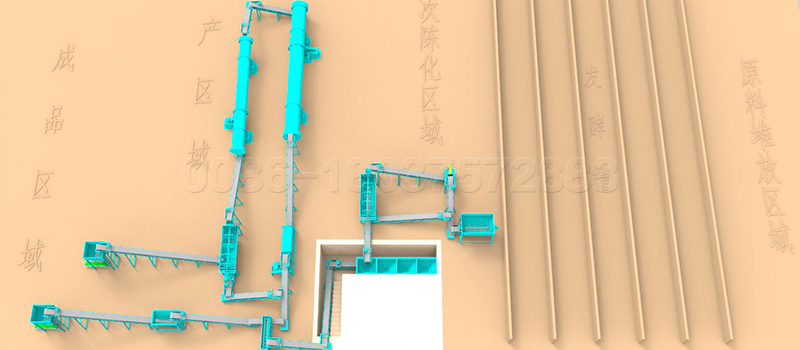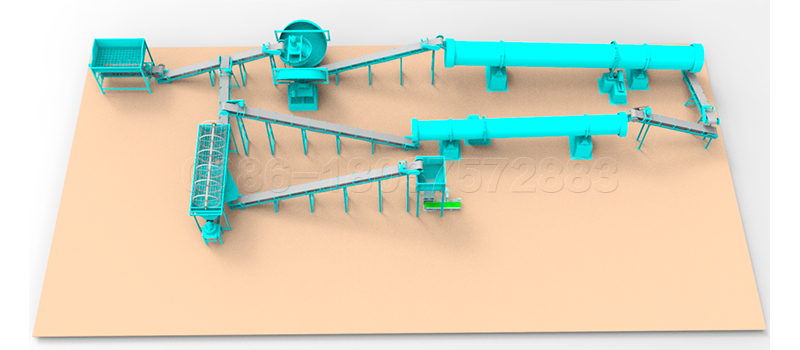Process design description of NPK fertilizer production line:
1. Batch processing:
Electronic batching or disc batching.
2. Crushing process:
The mixed fertilizer proportioned according to the design requirements is sent to the raw material crusher for raw material crushing. The purpose is to crush various raw materials to a certain fineness. Basically, the particle size of raw materials is less than 1mm, which is conducive to the material in the granulator. Roll inside to meet the standard ball.

3. Granulation process:
The crushed mixture is conveyed to the fertilizer granulator through the conveyor. The liquid phase provided by the slurry or water in the extrusion granulator makes use of the centrifugal force brought by the rotation of the fertilizer granulator to turn the material into organic fertilizer. At present, it is better to use the disc granulator to produce organic fertilizer. The granulation rate of disc granulator can reach more than 90%, but the table output is low.
4. Drying process:
The granular materials are transported to the rotary three drum dryer through the conveyor. The hot blast stove is set at the inlet of the dryer to provide heat for the drying of materials in the dryer and evaporate the water in the formed materials into water. The steam is introduced into the dust collection chamber through the fan to remove dust. After the material enters the dryer, the liquid phase of the material is high and the ball strength is low. In order to ensure the sphericity of the material, we used it in the design of the dryer.
5. Cooling process:
The moisture content of materials after drying generally can not meet the water content requirements of organic fertilizer. Cooling in the cooler is very important for the NPK fertilizer manufacturing process.
6. Screening process:
The cooled organic fertilizer still has a certain temperature. After the organic fertilizer material enters the screening machine, the organic fertilizer material is roughly classified, and the screened fine powder is directly returned to the granulator for granulation. After screening, the screened coarse material is crushed by the return chain crusher, and then returned to the granulator for re granulation. The finished product is directly sent to the silo of the packaging scale. On the other hand, compound fertilizer materials are also used for screening projects. Cooling engineering plays a certain role in reducing temperature and preventing material caking.
7. Packaging process:
The coated finished organic fertilizer enters the silo of the packaging scale, automatically counts according to the set quantity, then puts it into the packaging bag, and then through the automatic sewing system, the sewn compound fertilizer can be stacked in the silo. Warehouse. In principle, the height of each stack shall not exceed 8 bags and the height shall not exceed 10 bags. The ground must be damp proof.
More detailed info, go to https://fertilizerproductionlines.com/npk-fertilizer-production-line/



